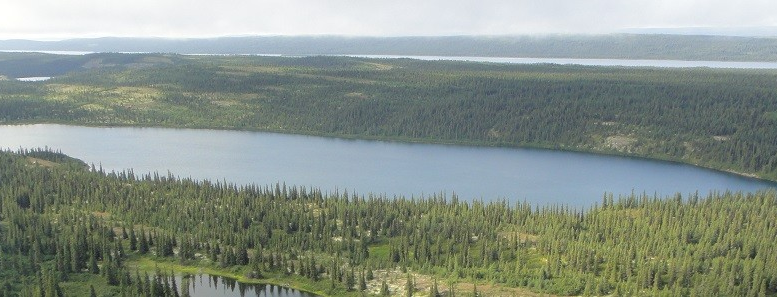A trio of First Nations in Quebec have jointly opposed Century Global Commodities’ (TSX: CNT) Joyce Lake iron ore project in western Labrador, while the company says it’s working on addressing their environmental concerns.
The Innu Nations of Matimekush-Lac John and Uashat mak Mani-utenam and the Naskapi Nation of Kawawachikamach, all in eastern Quebec, issued the statement on Wednesday on the sidelines of the Prospectors & Developers Association of Canada conference.
“The environmental impacts of the ‘Joyce Lake’ project would be devastating and irreversible, including the destruction of Joyce Lake and nearby water bodies to make way for a huge open-pit mine,” the Nations said in their statement. They added that waste rock, the construction of a 1.2-km rock bridge over Iron Arm Lake and 46 km of new roads would encroach on wildlife habitat.
Century President and CEO Sandy Chim says he’s surprised by some of the First Nations’ comments because the environmental assessment process has been ongoing since 2013 and the company is working to address their concerns.
Seven-year mine life
The open-pit Joyce Lake mine, located 20 km northeast of Schefferville, Que. could produce about 2.5 million tonnes per year over a seven-year life, according to a 2022 feasibility study. It hosts proven and probable reserves of 17.4 million tonnes grading 59.9% iron. The study pegs Joyce Lake’s post-tax net present value (at an 8% discount rate) at $185 million and its internal rate of return at 20%, with capital costs of $270 million.
Century plans to build a 43-km haulage road to transport mined ore to an existing railway line, where it’s to be shipped 600 km south to the port of Sept-Îles on the north shore of the Saint Lawrence River.
‘Flawed approach’
Kawawachikamach Naskapi Nation Chief Louise Nattawappio said her Nation can’t accept a project that threatens their environment, culture and identity.
“Many of our members have camps and cottages in front of the planned facilities and Iron Arm Lake is where we most regularly transfer our traditional knowledge and frequent significant cultural and spiritual sites,” he said. “Century’s flawed approach not only failed to convince us of the soundness of the project but confirmed to us that it was unacceptable, and that Century would not be a respectful partner.”
‘Mitigating environmental concerns’
Chim told The Northern Miner in an interview that Nattawappio’s position surprises him.
“But I respect her comments. What she says she feels is important,” Chim said. “We are in the process of trying to get a meeting with the chief and council to discuss those issues. We look forward to their comments about the open pit, waste rock and bridge and how we can mitigate that.”
The company has been going through the environmental impact statement (EIS) process with the Impact Assessment Agency of Canada and the Newfoundland and Labrador Department of Environment and Climate Change, Chim explained.
The three First Nations in Quebec, as well as the Innu Nation and NunatuKavut Community Council in Labrador have submitted written feedback to the EIS process for a total of 138 “information requirements” that Century is currently addressing.
“It’s a process of going back and forth and commenting on the (mine’s) specific design, (such as) the waste rock pile. That process has been happening since 2013,” Chim said.
The environmental review process is expected to last up to two years and if that’s successful and Century receives its permits, mine construction could start in 2027, with production to follow 18 months later.


Be the first to comment on "First Nations slam ‘unacceptable’ iron ore project in western Labrador"